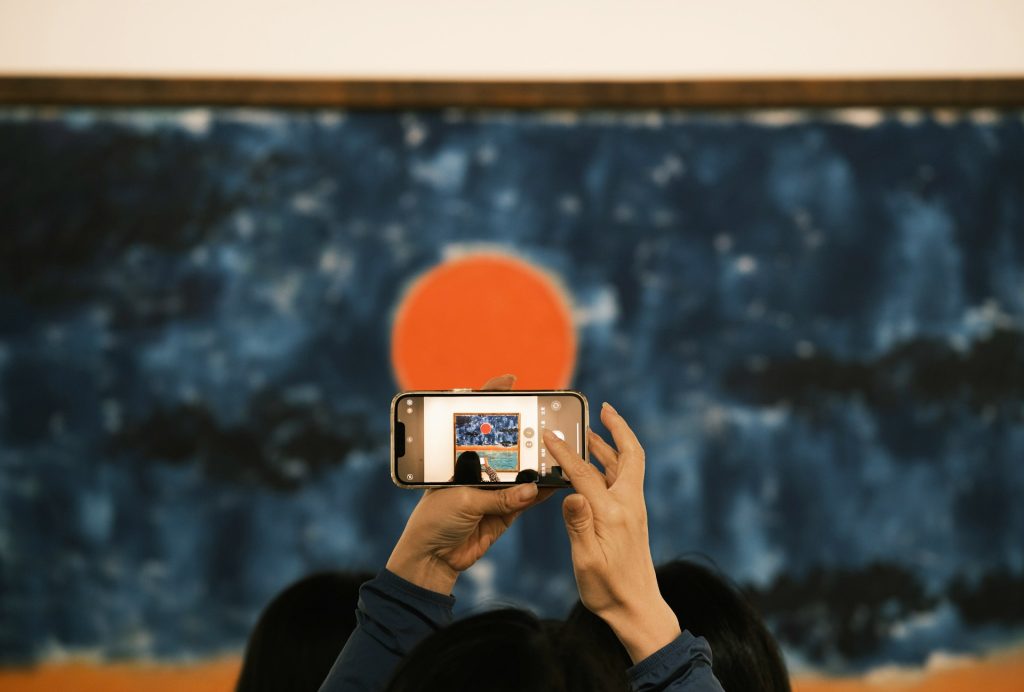Six Things to Consider When Creating Digital Museum Experiences
Explore the digital museum experience and learn how to engage visitors through innovative online content and presentations.

Creating a digital museum experience isn’t just about translating what happens on-site to a screen—it’s about opening up your collection in ways that are useful, dynamic, and easy to navigate. Whether you’re creating a digital guide, building a website, or developing your own app, the goal is to extend your museum’s mission into the digital space in a way that’s clear, engaging, and welcoming to a wide range of users. Here are six things to keep in mind as you work.
1. Know Your Audience
Visitors will come to your digital museum content with different backgrounds, interests, and needs. Some will be deeply familiar with your collection; others may have just stumbled across your museum online. Think about why they might be drawn to your content—are they planning a visit, following a school assignment, or simply browsing out of curiosity? Not everyone will know your collection, your mission, or even your museum’s role in the field.
Good digital content makes space for all kinds of visitors. That means including clear, up-to-date practical information like hours, location, and ticketing, while also offering ways to explore collection highlights and temporary exhibitions, learn about upcoming events, and understand your museum’s history and mission. Whether someone is visiting for the first time or returning with a specific interest or question, your content should help them feel oriented, informed, and invited to learn more.
2. Make It Accessible
Accessibility extends far beyond a technical checklist; it’s a way to ensure that all visitors can connect with what your museum offers. Start by using clear and readable language, adding image descriptions (alt text) and audio transcripts, and writing effective alt text for important visuals. Whether your content lives on a website, in an app, or as part of an on-site digital guide, it should work well with assistive technologies like screen readers. Layouts that adapt to different screen sizes, allow for zoom, and offer high contrast display options can help visitors with low vision. If you know your audience includes second-language readers, consider offering translations or keeping language straightforward and easy to understand. An easy-to-follow experience makes it simpler for everyone to engage fully, no matter how they access your content.
3. Prioritize Quality Visuals
Strong visuals make a big difference in how digital visitors connect with your content. Clear, high-resolution images and well-edited videos can help them engage more deeply with your collection, especially when they can’t be there in person. Beyond images of works in your collection, consider including exhibition installation views, close-up details of works of art, and images of your museum’s spaces—visuals that convey scale, atmosphere, or setting in ways individual object photos can’t. Poor-quality media, on the other hand, can create distance or confusion for the visitor. Taking the time to incorporate visuals that truly reflect the quality of your collection and spaces will be worth it. (And be sure to check how your images appear across different screen sizes, from phones to desktops!)
4. Think About Voice and Storytelling
Who is telling your museum’s story—and why? The voices included in your wall didactics and digital content shape how users understand the collection. This is a chance to be thoughtful about representation: whose perspectives are commonly featured, and who has been left out historically?
In addition to offering the points of view of your director or curators, consider incorporating voices that bring the collection to life in different ways. Perhaps there’s a long-time volunteer who knows your museum’s history firsthand, a student who’s done deep research on a single object, or a frequent visitor who has a special memory to share. Gallery attendants, community partners, and even kids can offer fresh, unexpected insights into your collection. These perspectives not only make your content richer, they help more people see themselves reflected in your museum’s story.
5. Make It Easy to Navigate
Structure matters. Visitors shouldn’t have to guess where to go next in your digital experience or wonder how to find what they’re looking for. Clear section headings, consistent formatting, and intuitive pathways—like next buttons or simple menus—can help visitors feel more grounded as they explore. Good navigation isn’t just a question of design; it makes the experience feel welcoming and easy to follow. It’s also an important part of accessibility, because it helps all users move through your content with confidence. As you work on your digital museum experience, test it with people who aren’t familiar with the project, including those who may use assistive tools. Their feedback might highlight small changes you can make to improve the experience for everyone.
6. Plan for Updates
Because museums are always evolving, your digital content should be, too. Think of digital museum content as something that grows over time, not something that needs to be complete on day one. Build space for regular updates into your project plan, whether that means adding new objects, refreshing exhibition information, or incorporating visitor feedback. Treat your digital spaces the way you treat your galleries: as living parts of your museum that need care, attention, and the occasional refresh.
Every digital museumexperience is a new way to welcome visitors to your collection. With thoughtful planning, you can create something that connects more people to what makes your museum special.
Contact the team at Flatpage by clicking below. Book a free editorial consultation and get 10% off your first service!